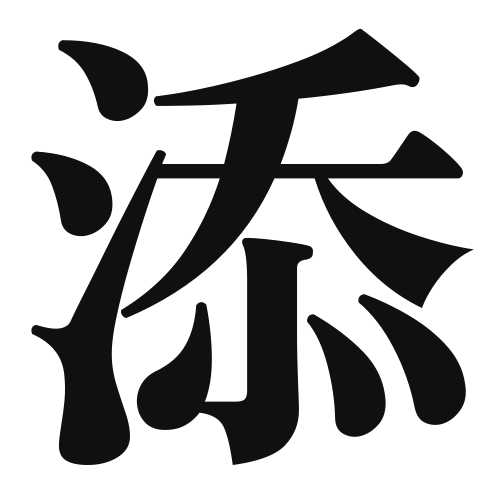1. Overview of Meaning
The kanji “添” (pronounced “ten” or “so”) means “to add,” “to attach,” or “to accompany.” It conveys the idea of adding something to enhance or support another element.
2. Formation and Radical
Formation of the Kanji: The kanji “添” is a compound character (会意文字) that combines elements to convey its meaning. It consists of the radical “手” (meaning “hand”) on the left, which suggests action, and the character “音” (meaning “sound”) on the right, which can imply harmony or accompaniment.
Radical: The radical of “添” is “手” (hand), indicating actions related to adding or attaching.
3. Examples of Usage
Common Words and Phrases: Some frequently used words that include “添” are:
- 添付 (てんぷ, tenpu) – attachment
- 添え物 (そえもの, soemono) – side dish or accompaniment
Example Sentences in Daily Conversation:
- この料理には、サラダを添えてください。 (Please add a salad as an accompaniment to this dish.)
- メールにファイルを添付しました。 (I have attached a file to the email.)
4. Synonyms and Antonyms
Similar Kanji: A similar kanji is “加” (か, ka), which also means “to add.” However, “加” often implies an increase in quantity or degree, while “添” focuses more on the act of adding something supplementary.
Antonyms: An antonym of “添” is “削除” (さくじょ, sakujo), which means “to delete” or “to remove,” indicating the opposite action of taking something away.
5. Cultural and Historical Background
Relation to Japanese Culture: The concept of “添” is significant in Japanese culture, especially in culinary practices where side dishes (添え物) enhance the main dish, reflecting the importance of balance and harmony in meals.
Proverbs and Idioms: One common saying is “添え物は心” (そえものはこころ, soemono wa kokoro), which translates to “the accompaniment is the heart,” emphasizing the value of thoughtful additions in various aspects of life.
